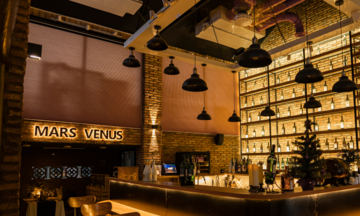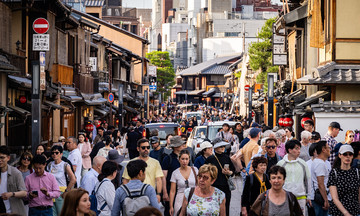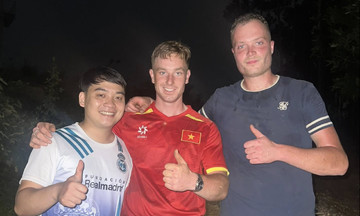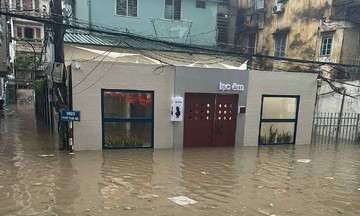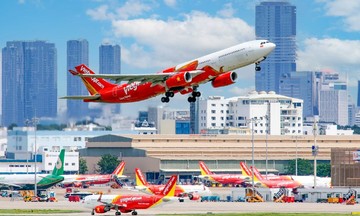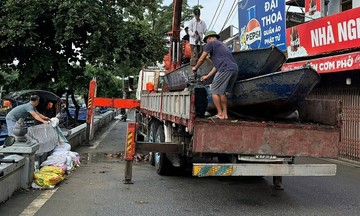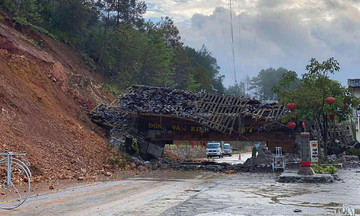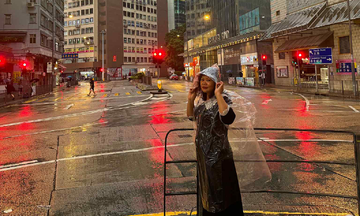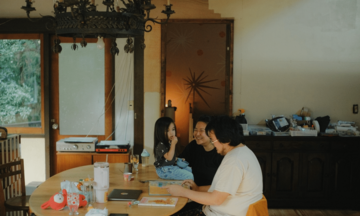Cai Rang floating market, about 6 km from Can Tho's center, is one of the largest and most iconic floating markets in the Mekong Delta. The market operates from 5 a.m. to 10 a.m. Here, visitors can enjoy the cool air, the mist covering the river's surface, and the sounds of boat engines mixing with the waves, creating a peaceful scene. Drifting on the river in the early morning can help runners escape the city's noise and enjoy a sense of relaxation and tranquility.
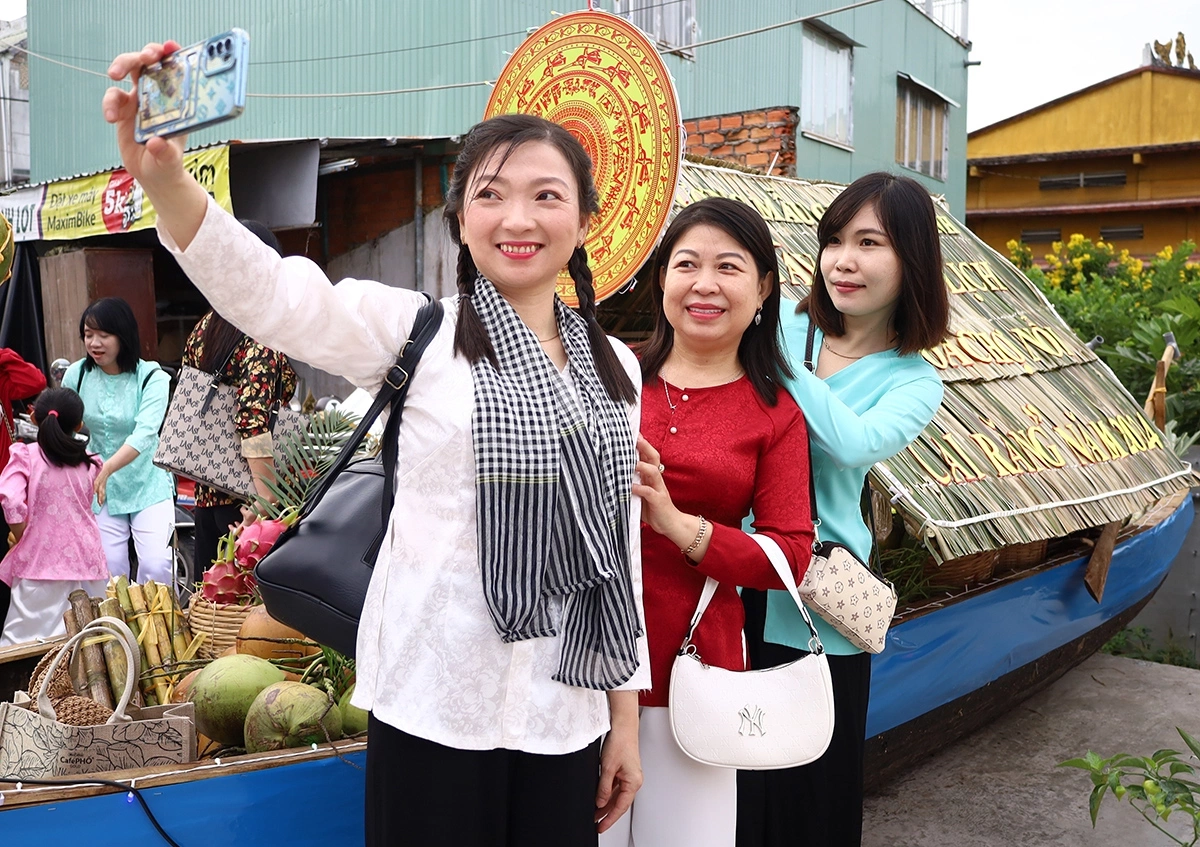 |
Tourists take photos at Cai Rang floating market. Photo: Trung Pham |
Tourists take photos at Cai Rang floating market. Photo: Trung Pham
Visitors should depart around 5 a.m. to experience the bustling market and enjoy the sunrise over the Hau River. At this time, boats line up, laden with agricultural products like watermelons, mangoes, pumpkins, and pineapples. This is also a popular time for capturing photos of the region's river life. Visitors can take pictures from the boat's side facing the river, from the bow towards the stern, or towards Cai Rang bridge.
Having breakfast on the river is a favorite activity for visitors to the floating market. Bowls of "hu tieu" noodles, "bun rieu" crab noodle soup, soy milk, and iced coffee with milk are prepared directly on the boats, serving both locals and tourists. Enjoying breakfast amidst the river environment allows visitors to experience the simple life connected to the Hau River.
During his Mekong Delta culinary exploration in 2012, chef Gordon Ramsay exclaimed that he had never tasted "bun rieu" like the one served on a boat here. After enjoying the dish, the Scottish chef learned how to make the broth.
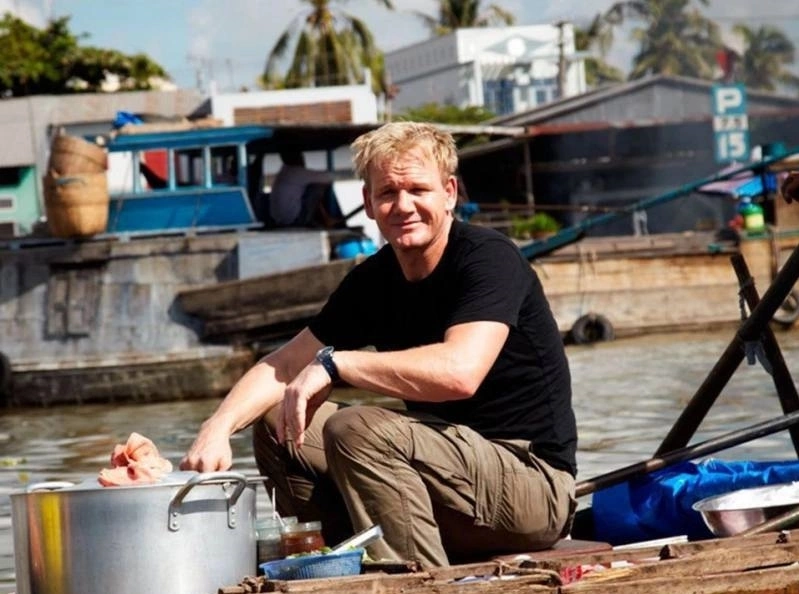 |
Gordon Ramsay on a "bun rieu" boat at Cai Rang floating market, Can Tho, in 2012. Photo: Eater |
Gordon Ramsay on a "bun rieu" boat at Cai Rang floating market, Can Tho, in 2012. Photo: Eater
While visiting the floating market, visitors will see bamboo poles erected on each boat, displaying agricultural products like watermelons, pineapples, mangoes, and pumpkins. Locals call these "cay beo" - a unique way for traders to advertise their goods in the river region. This method helps buyers easily identify products from afar and creates a distinctive cultural feature, reflecting the creativity of the Mekong Delta's people.
Besides agricultural products, the floating market has "mobile stalls" for visitors to experience. Locals sell fresh fruit, prepare dishes on the spot, and offer dried specialties, cakes, and candies as souvenirs, such as coconut candy, rice paper, dried snakehead fish, and plum wine.
Especially, on Saturdays and Sundays from 6:30 a.m. to 7:30 a.m., visitors can enjoy traditional music performances on the river. The program features local artists. This is an opportunity to experience this art form, recognized by UNESCO as an intangible cultural heritage, integral to the spiritual life of the Mekong Delta people.
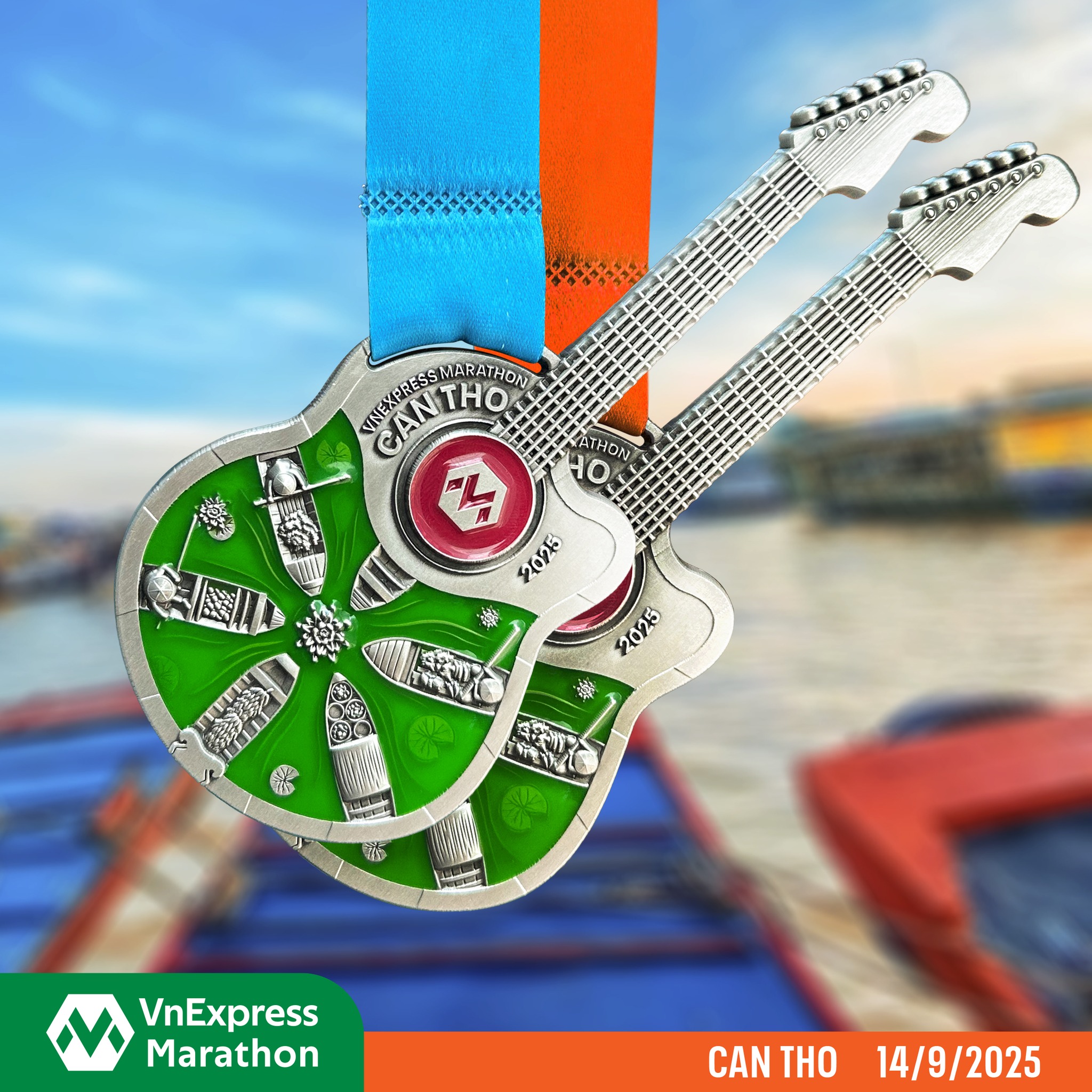 |
The VnExpress Marathon Can Tho medal is inspired by the boats on Cai Rang floating market and the lap steel guitar. Photo: VnExpress Marathon |
The VnExpress Marathon Can Tho medal is inspired by the boats on Cai Rang floating market and the lap steel guitar. Photo: VnExpress Marathon
After Cai Rang floating market, runners can continue their journey to other tourist attractions in the city, such as the fruit orchards in Phong Dien, My Khanh Tourist Village, Ong Temple, or Ninh Kieu wharf. A short morning is enough to offer visitors a glimpse into the many layers of Mekong Delta culture, from river life to orchards and temples.
The VnExpress Marathon Can Tho 2025 will take place on the morning of 14/9, bringing together over 9,000 runners from Vietnam and abroad. This is the first race of the system in the Mekong Delta. The event promises to promote Can Tho's image as the economic and tourism hub of the Mekong Delta region.
Hai Long



